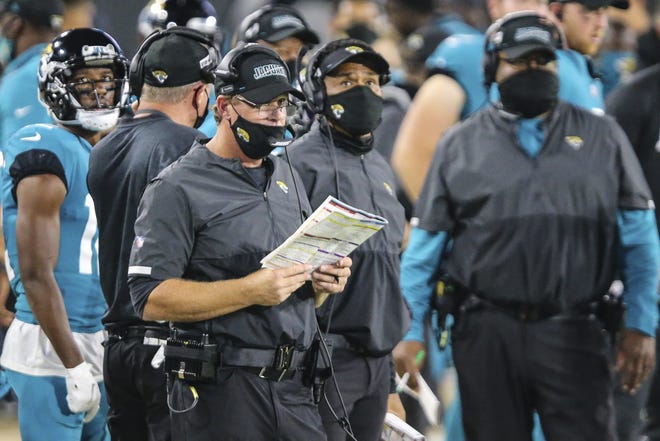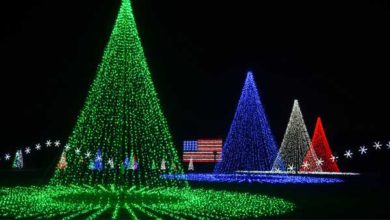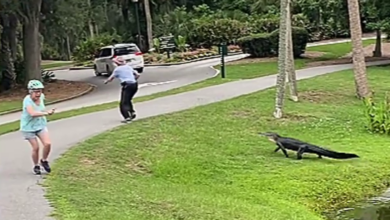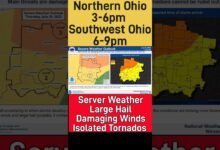

Former Arkansas Gov. Asa Hutchinson, who is running for president, touched on a number of topics recently in a "Conversation with the Candidate" town hall event.Watch the full conversation in the video player above or the links below. Included is a 30-minute, online-only portion of the conversation:Watch Part 1: Hutchinson calls for heightened border securityWatch Part 2: Hutchinson outlines plan for American energy independence Watch online exclusive: Hutchinson shares abortion stanceConversation with the Candidate is a town hall-style program. It is intended to allow the candidate to convey their points of view on a wide range of topics. During the program, the moderator may challenge the candidates’ assertions, but every fact may not be checked in real time. Hearst Television is committed to holding the candidates accountable on their claims throughout the election cycle.Learn more about Asa Hutchinson's backgroundHutchinson, a Republican, served a term-limited eight years as governor of Arkansas.As governor, he oversaw the enactment of $250 million in tax cuts, expanded computer science education in schools and overhauled Arkansas' Medicaid expansion.Prior to his executive experience, he served three consecutive terms in the U.S. House of Representatives.During Hutchinson's third term, President George W. Bush appointed him director of the Drug Enforcement Administration and later undersecretary in the newly created Department of Homeland Security.Hutchinson also served as a U.S. attorney appointed by President Ronald Reagan, making him the youngest federal prosecutor at the time at the age of 31.He said his presidential campaign is about "appealing to the best of America" and not the nation's "worst instincts."Born and raised in Arkansas, Hutchinson earned an accounting degree from Bob Jones University and graduated from the University of Arkansas Law School.He's married to Susan Hutchinson, and the two have four children and seven grandchildren. See the full "Conversation with the Candidate" event through the following links:Watch Part 1: Hutchinson calls for heightened border securityWatch Part 2: Hutchinson outlines plan for American energy independence Watch online exclusive: Hutchinson shares abortion stance A GOP 'that no longer exists'? Hutchinson works to dispel that notionA recent New York Magazine article dubbed Republican Asa Hutchinson as the ideal presidential candidate for a GOP that "no longer exists." Asked about that characterization, Hutchinson said he still believes there's a GOP based on the principles of limited government, opportunity for everyone, individual responsibility and America being a strong leader of the free world."To me, that is the Republican Party," Hutchinson said. "Now, that should be the future of the Republican Party. That should be the principles that define us. And if that's out of vogue, then I want to correct our future."“We have to be the party of principle, the future optimism and a party that represents our national character,” he added. See more of his answer in the video player below:Hutchinson dubs action taken as US attorney one of his top career accomplishmentsHutchinson said one of his top professional accomplishments was working to negotiate the surrender of white supremacists in the northern hills of Arkansas."That was a big deal for me. It was a big deal for our country at that time."Hutchinson also touched on his accomplishments as governor, which he said included lowering taxes, improving education and raising teacher pay."We reduced taxes from 7% down to 4.9%. We're trying to get as good as New Hampshire on this tax business, but we made tremendous progress," Hutchinson said. He touted giving every certified law enforcement officer in his state a $5,000 bonus "just to say thank you for keeping us safe."See his full answer in the video below:See the full "Conversation with the Candidate" event through the following links:Watch Part 1: Hutchinson calls for heightened border securityWatch Part 2: Hutchinson outlines plan for American energy independence Watch online exclusive: Hutchinson shares abortion stanceOther "Conversation with the Candidate" events will be held throughout the campaign season. The full list of candidates who participate will be updated here.
Former Arkansas Gov. Asa Hutchinson, who is running for president, touched on a number of topics recently in a "Conversation with the Candidate" town hall event.
Watch the full conversation in the video player above or the links below. Included is a 30-minute, online-only portion of the conversation:
Conversation with the Candidate is a town hall-style program. It is intended to allow the candidate to convey their points of view on a wide range of topics. During the program, the moderator may challenge the candidates’ assertions, but every fact may not be checked in real time. Hearst Television is committed to holding the candidates accountable on their claims throughout the election cycle.
Learn more about Asa Hutchinson's background
Hutchinson, a Republican, served a term-limited eight years as governor of Arkansas.
As governor, he oversaw the enactment of $250 million in tax cuts, expanded computer science education in schools and overhauled Arkansas' Medicaid expansion.
Prior to his executive experience, he served three consecutive terms in the U.S. House of Representatives.
During Hutchinson's third term, President George W. Bush appointed him director of the Drug Enforcement Administration and later undersecretary in the newly created Department of Homeland Security.
Hutchinson also served as a U.S. attorney appointed by President Ronald Reagan, making him the youngest federal prosecutor at the time at the age of 31.
He said his presidential campaign is about "appealing to the best of America" and not the nation's "worst instincts."
Born and raised in Arkansas, Hutchinson earned an accounting degree from Bob Jones University and graduated from the University of Arkansas Law School.
He's married to Susan Hutchinson, and the two have four children and seven grandchildren.
See the full "Conversation with the Candidate" event through the following links:
A GOP 'that no longer exists'? Hutchinson works to dispel that notion
A recent New York Magazine article dubbed Republican Asa Hutchinson as the ideal presidential candidate for a GOP that "no longer exists."
Asked about that characterization, Hutchinson said he still believes there's a GOP based on the principles of limited government, opportunity for everyone, individual responsibility and America being a strong leader of the free world.
"To me, that is the Republican Party," Hutchinson said. "Now, that should be the future of the Republican Party. That should be the principles that define us. And if that's out of vogue, then I want to correct our future."
“We have to be the party of principle, the future optimism and a party that represents our national character,” he added.
See more of his answer in the video player below:
Hutchinson dubs action taken as US attorney one of his top career accomplishments
Hutchinson said one of his top professional accomplishments was working to negotiate the surrender of white supremacists in the northern hills of Arkansas.
"That was a big deal for me. It was a big deal for our country at that time."
Hutchinson also touched on his accomplishments as governor, which he said included lowering taxes, improving education and raising teacher pay.
"We reduced taxes from 7% down to 4.9%. We're trying to get as good as New Hampshire on this tax business, but we made tremendous progress," Hutchinson said.
He touted giving every certified law enforcement officer in his state a $5,000 bonus "just to say thank you for keeping us safe."
See his full answer in the video below:
See the full "Conversation with the Candidate" event through the following links:
Other "Conversation with the Candidate" events will be held throughout the campaign season. The full list of candidates who participate will be updated here.
Source link







